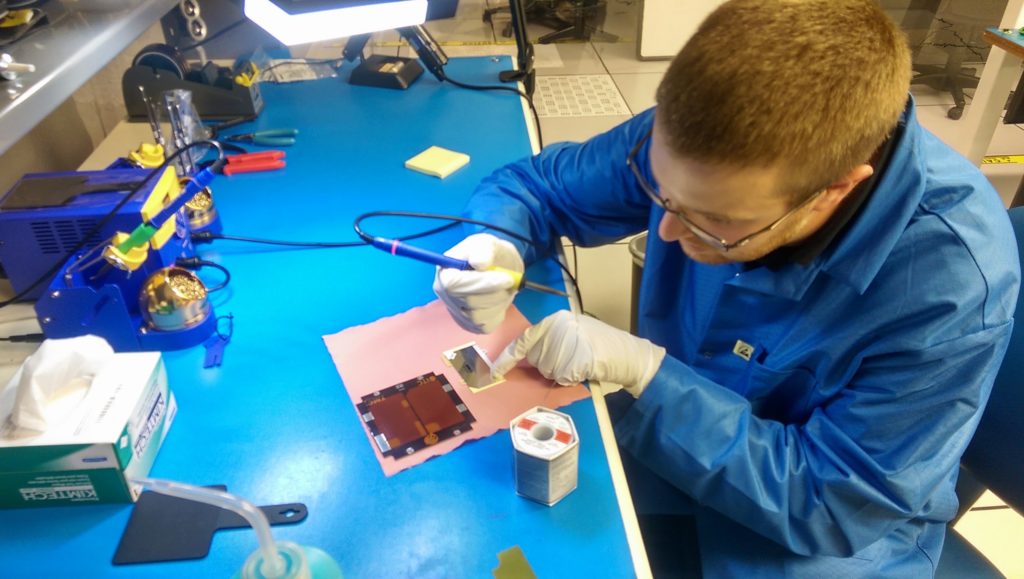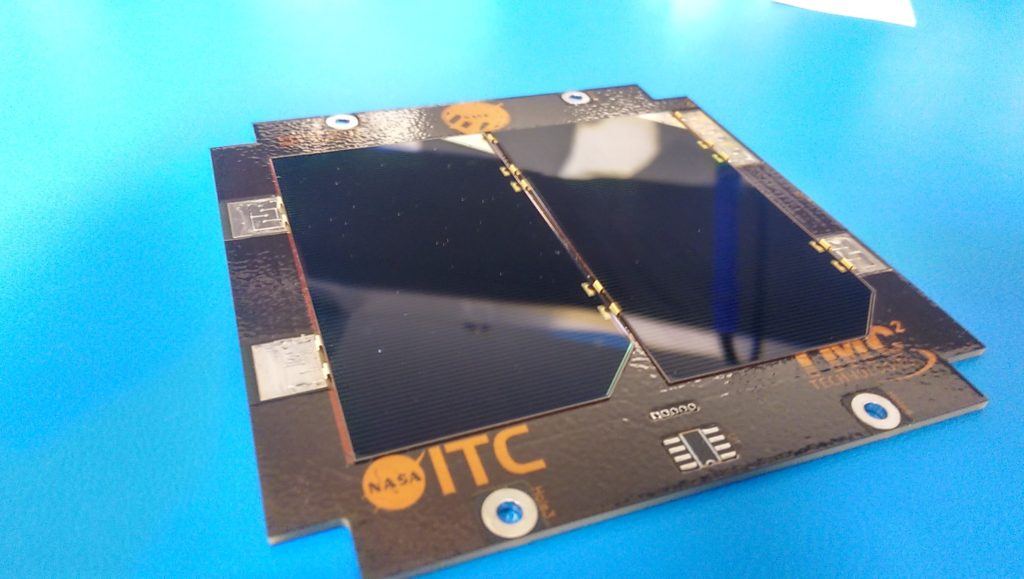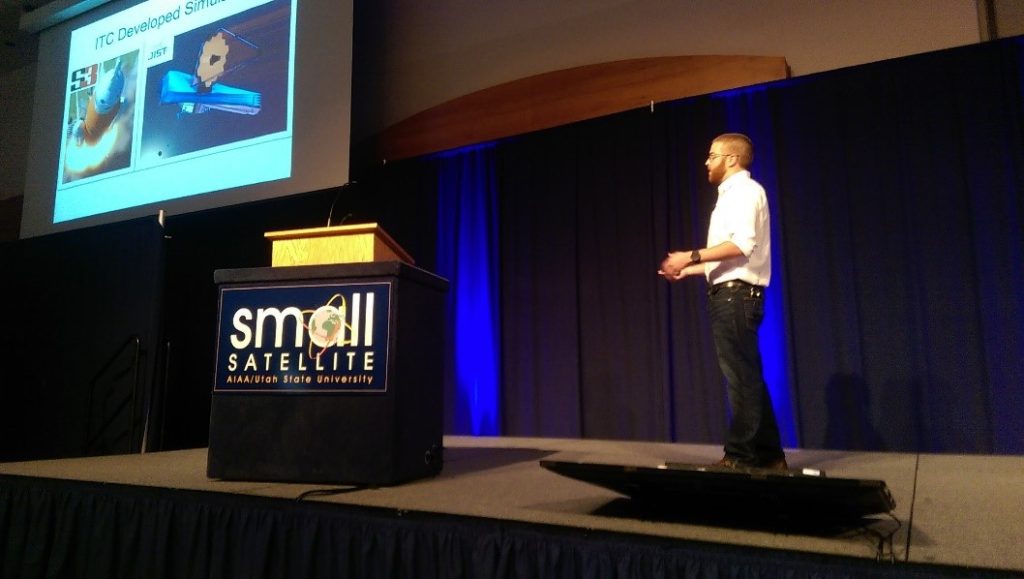The STF-1 team made the decision early on to leverage the efforts of another Goddard CubeSat mission, Dellingr, in components used. This included custom designed solar panels created in house. Interns at GSFC spent a summer perfecting the process of designing and building these solar panels. This includes printed circuit board (PCB) design, construction materials and process, as well as how to test a panel is fully functional and ready for flight.

The picture above shows STF-1’s technical lead, Matthew Grubb, preparing to solder the silver connector onto the solar cell to allow for a connection to the PCB. STF-1 will have up to seven of these cells connected in a row attached to the board only by the four solder pads and a special type of tape underneath each cell. Below you can see the completed solar panel and these connections. The temperature sensor (empty pad in the picture) will be added and tested before flight as well.



